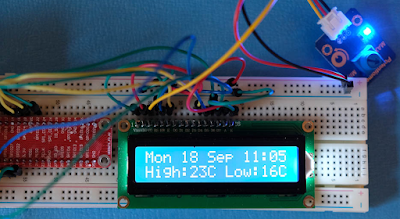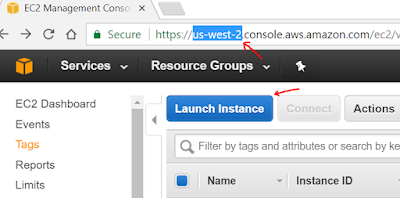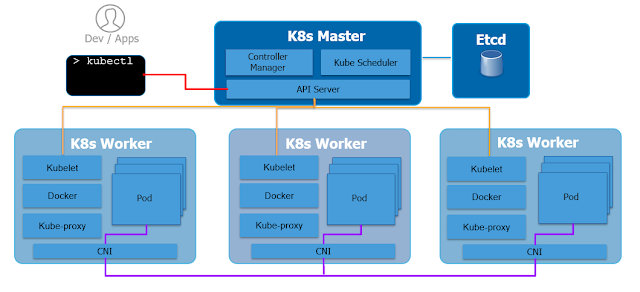Pied Piper 2017 - Personal projects
The Pied Program program recently reached a major milestone; the completion of the enablement phase. Overall have covered 4 workshops that cover the pillars of the Digital and IT transformation: Agile and Cloud Native Apps, Automation, Internet of Things and Artificial Intelligence. Customers often see DellEMC Presales Engineers as trusted advisors. The knowledge we acquired through the program will help ensure we remain relevant in the context of the big wave that is shaking the market.
To culminate this phase we asked the team members to work on a personal project that would help them internalise what we have taught so far. This would be a competitive endeavour. They would be scored primarily on the use of all different skills with a minimum one skill from each workshop. This led to them adding features to their projects that looked unnecessarily convoluted or even not fitting naturally with the rest of the solution. We also scored creativity.
At the end we saw a range of environment and security monitors with multiple sensors using local displays and web app components in Pivotal Cloud Foundry. Most projects used also ready-to-consume Artificial Intelligence APIs like AWS Polly and Restful API calls to services like Weather Underground. Below Pravesh's Raspberry PI shows a pleasant home temperature for Melbourne at this time of the year :)
The name of his project was "I'm thinking of a number: an overly complicated game", a game he plays with his children to keep them entertained during car trips. The system generates a random number and players submit their guesses via direct messages on Twitter. The player that correctly guesses the number gets Twitter message with a colour sequence.
A colour sequence? yes, it is the code to deactivate bomb which is a Raspberry PI that plays explosion sounds or a congratulation messages if deactivated on time. As you can see in the diagram above the timer is essentially a complex workflow where Warren showed that he had learned about technologies like Vagrant, object storage (S3) and serverless (AWS Lambda). This is the project in action
In a future article I will show what's coming next in the program, including a Hackathon and the whole team working together as a start-up for 2 months.
This is part 2 of a 5 post series about the 2017 Pied Piper program:
1 - Program intro - Must start somewhere
2 - Personal projects
3 - Hackathon
4 - Agile sprints
5 - Tech Summit
To culminate this phase we asked the team members to work on a personal project that would help them internalise what we have taught so far. This would be a competitive endeavour. They would be scored primarily on the use of all different skills with a minimum one skill from each workshop. This led to them adding features to their projects that looked unnecessarily convoluted or even not fitting naturally with the rest of the solution. We also scored creativity.
At the end we saw a range of environment and security monitors with multiple sensors using local displays and web app components in Pivotal Cloud Foundry. Most projects used also ready-to-consume Artificial Intelligence APIs like AWS Polly and Restful API calls to services like Weather Underground. Below Pravesh's Raspberry PI shows a pleasant home temperature for Melbourne at this time of the year :)
Another team member, Theo, focused on something that should prove help him in the coming weeks: a baby monitor. This includes a motion sensor and environment data to correlate the amount of times the baby moves with variables like room temperature to maximise baby's rest. He was even aiming at preventing SIDS by integrating computer vision but he run out of time.
We also saw two talking clocks from Daniel and Michael which coped positions 3 and 4 respectively. They implemented web interfaces to configure their clocks, NTP for staying in sync and Crontab to execute on various alarms:
- Between buttons, LEDs, an LCD display, a potentiometer and a buzzer, Michael's clock was the strongest project on the IoT side. He also used AWS Rekognition for tagging random photos that were displayed in the web interface. Going forward he is also planning to replace the "annoying" buzzer with a Rest API call to his wireless Yamaha sound system
- Daniel's project stood out from a couple of reasons. It looked like a finished product thanks to a Lego case he built, which essentially required a single power cable in. He also figured out how to get the clock to use Daniel's own voice to say the time. He too intends to keep expanding the functionality of his project to do things that his Google Voice cannot do
Phil came in second place. His project implemented various functionality like Twitter sentiment analysis, temperature monitoring and displaying, but the central element of his project was a photobooth that takes your photo with a Raspberry Pi camera, it manipulates it with "deep dreaming" algorithms and automatically publish the result to a web app as well as on his Twitter account. In this photo Phil is presenting the workflow of his project
Phil leveraged the Bootstrap CSS extensively and his web app was the best looking one. Going forward he wants to explore the use of EC2 with GPU service to speed up the complex Deep Dreaming algorithms he used for his project. This is what my worst nightmare looks like.
The first prize was awarded to Warren. His project made use of more elements than anybody else's but still managed to remain cohesive. It was also a very creative project
The name of his project was "I'm thinking of a number: an overly complicated game", a game he plays with his children to keep them entertained during car trips. The system generates a random number and players submit their guesses via direct messages on Twitter. The player that correctly guesses the number gets Twitter message with a colour sequence.
This is part 2 of a 5 post series about the 2017 Pied Piper program:
1 - Program intro - Must start somewhere
2 - Personal projects
3 - Hackathon
4 - Agile sprints
5 - Tech Summit
Feel free to explore the other articles as well










Comments
Post a Comment